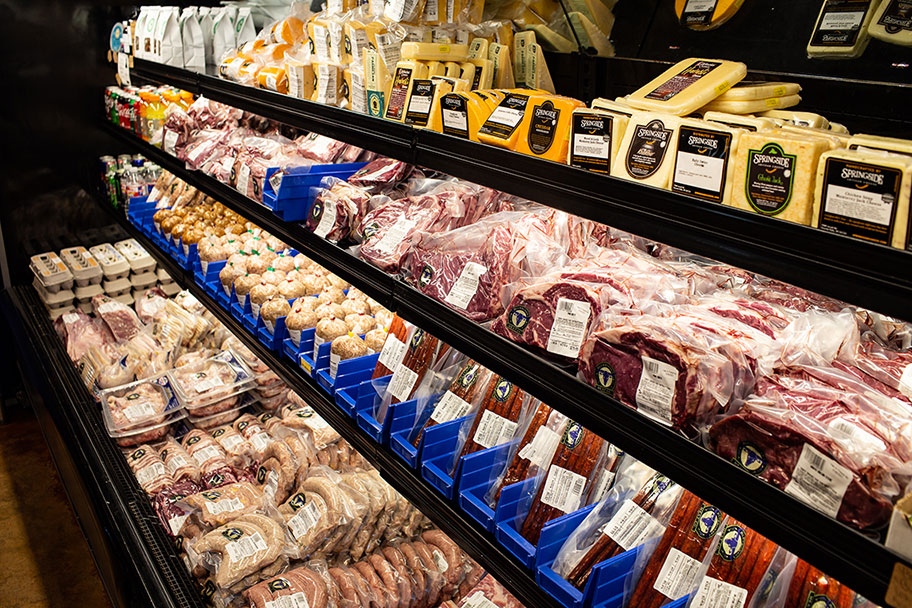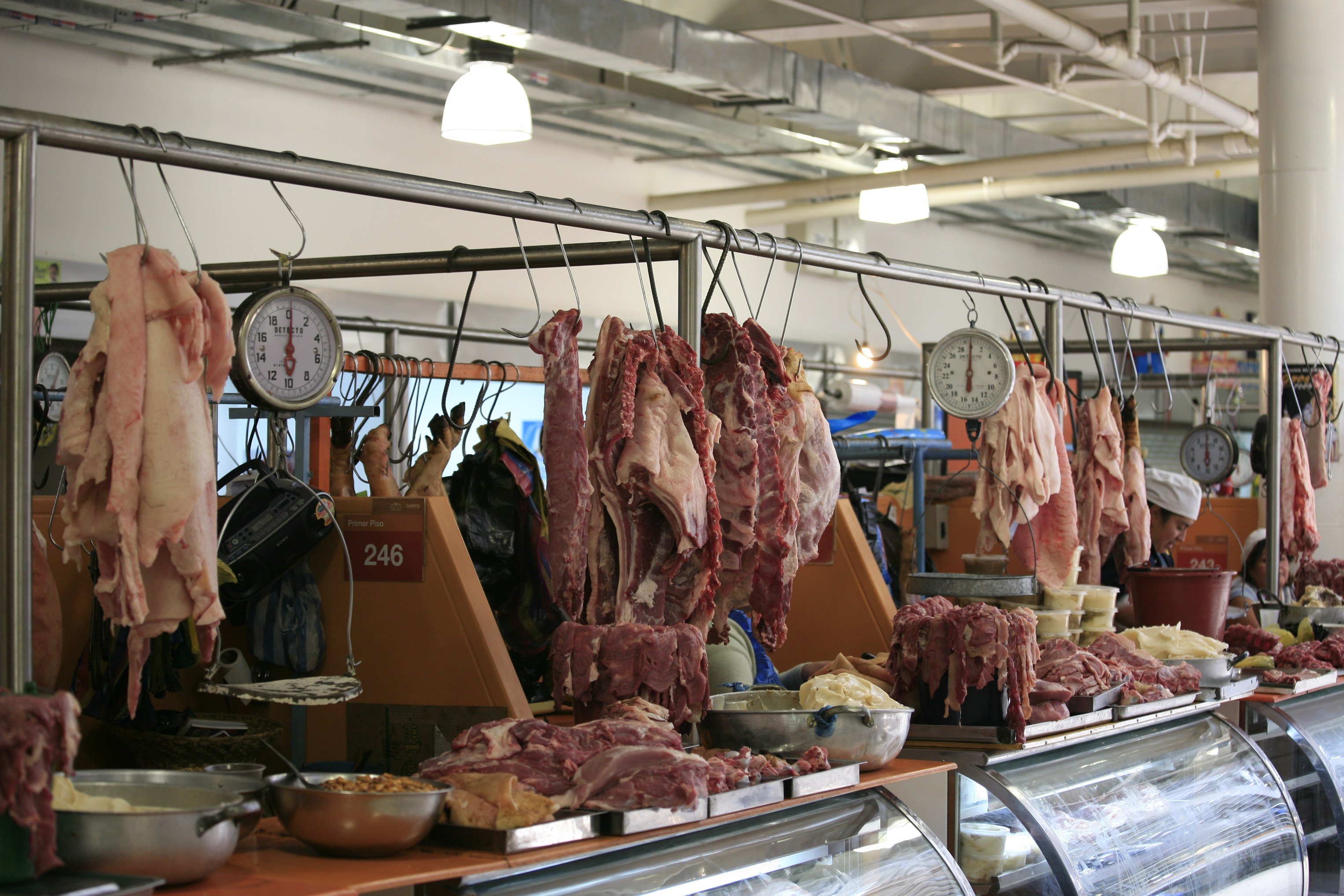Check Out the Regional Flavor at Bagley Farms Meat Market Edwardsville IL: Fresh and Delicious
Check Out the Regional Flavor at Bagley Farms Meat Market Edwardsville IL: Fresh and Delicious
Blog Article
Discover the Art of the Butcher's Cut in a Modern Meat Market
In the ever-evolving landscape of modern-day meat markets, the butcher's cut has actually transcended its typical roots, merging olden craftsmanship with modern techniques. Today's butchers are not merely cpus of meat; they are experienced craftsmens who emphasize sustainability and honest sourcing. Their competence in picking and preparing cuts customized to certain cooking demands supplies an unmatched eating experience. What genuinely establishes the modern-day butcher apart is their capacity to forge a much deeper connection in between customers and the beginnings of their meat. Exactly how do these masters balance tradition with advancement, and what effects does this have for the future of meat usage?
Evolution of Butchery Methods
The development of butchery methods mirrors a rich tapestry of development and adaptation driven by developments in modern technology, changes in consumer need, and a deeper understanding of meat scientific research. Historically, butchery was a craft passed down with generations, with techniques sharpened over centuries to make the most of return and flavor. The industrial transformation ushered in automation, transforming conventional methods and making it possible for large-scale processing.
The mid-20th century saw butchery strategies better refined by clinical understandings right into muscle biology and meat aging, improving both inflammation and preference. Innovations like vacuum packaging and refrigeration expanded item shelf-life, allowing butchers to diversify offerings and enhance quality assurance. This period likewise noted the surge of specialized equipment, such as band saws and meat slicers, which enhanced precision and effectiveness in meat processing.

Computerized systems currently help in tracking pet provenance and maximizing cuts to satisfy specific consumer choices. Additionally, a resurgence in artisanal butchery has actually emerged, mixing standard skills with modern-day understanding to cater to customers seeking moral and sustainable meat choices.
Comprehending Meat Cuts
Understanding the ins and outs of meat cuts is necessary for both butchers and consumers looking for quality and worth. Each cut comes from a various part of the animal, presenting distinct flavors, textures, and food preparation techniques - bagley farms meat market edwardsville il. Mastery of these distinctions not only improves cooking experiences however also maximizes the energy of each carcass. For butchers, accurate cuts reflect skill and regard for the craft, ensuring marginal waste and ideal return.

Recognizing muscle mass composition is important; muscles used extra regularly by the pet have a go to my site tendency to be tougher and are best fit for slow cooking techniques, while less-used muscles, like those located in the loin, are a lot more tender and ideal for cooking or roasting. Experience with these differences encourages consumers to make enlightened options, enhancing their cooking ventures.
Selecting Top Quality Meat
Selecting the ideal meat involves even more than just selecting a visually appealing piece from the display screen. bagley farms meat market edwardsville il. The art of choosing top quality meat needs a discerning eye and understanding of specific features that symbolize freshness and quality. First of all, take notice of the color; beef must have a bright, cherry-red color, while lamb should display a soft pink tone, and pork a light pink. This shows the meat is fresh and hasn't been exposed to oxygen for as well long.
Second of all, consider the marbling, which refers to the white flecks of fat within the muscular tissue. Appropriate marbling is a vital indicator of tenderness and taste, as it melts during food preparation, improving the meat's juiciness. Bear in mind, greater marbling usually correlates with superior high quality cuts, such as USDA Prime.
Texture is another essential factor; meat needs to feel firm to the touch, not slimy or extremely soft. Furthermore, be conscious of the scent. Fresh meat ought to have a tidy, neutral scent, devoid of any kind of sour or off-putting smells.
Matching Cuts With Food Preparation Approaches

Alternatively, harder cuts like brisket and chuck roast are rich in collagen, which breaks down right into jelly when prepared gradually. These cuts are perfect for braising or sluggish roasting, permitting the meat to tenderize in time and establish deep, intricate tastes. Similarly, cuts such as brief ribs and pork shoulder prosper with slow-cooking techniques, where prolonged cooking times change their durable appearances right into delicious dishes.
Lamb shanks and oxtail, which call for long term food preparation to soften, are excellent prospects for cooking or sluggish simmering. These techniques coax out rich, hearty flavors while maintaining moisture. By understanding the distinct qualities of each cut, chefs and home cooks alike can elevate their culinary productions, guaranteeing each recipe is both pleasing and remarkable.
The Butcher's Function Today
Navigating the advancing landscape of the modern meat market, the butcher's duty today prolongs past mere prep view work of cuts. Contemporary butchers are culinary artisans, instructors, and advocates for lasting practices.
Along with crafting precise cuts, butchers now involve directly with clients, supplying cooking guidance and customizing selections to fit specific needs and choices. Their knowledge in meat aging, marbling, and taste profiles empowers customers to make educated choices, enhancing their culinary experiences. This individualized solution exemplifies the butcher's developing function as a relied on advisor in the kitchen area.
Moreover, butchers are critical in minimizing waste, utilizing whole pets to produce varied items such as sausages and supplies. This extensive technique not just appreciates the pet but also lines up with modern sustainability goals. This way, the contemporary butcher personifies both tradition and development, adapting to an ever-changing market while protecting the artistry and honesty of their craft.
Verdict
Mastery in comprehending diverse meat cuts and top quality indications encourages butchers to give enlightened suggestions, aligning specific cuts with optimum cooking methods. By recognizing historic practices while welcoming modern demands, the butcher's duty stays vital in today's innovative meat market.
Report this page